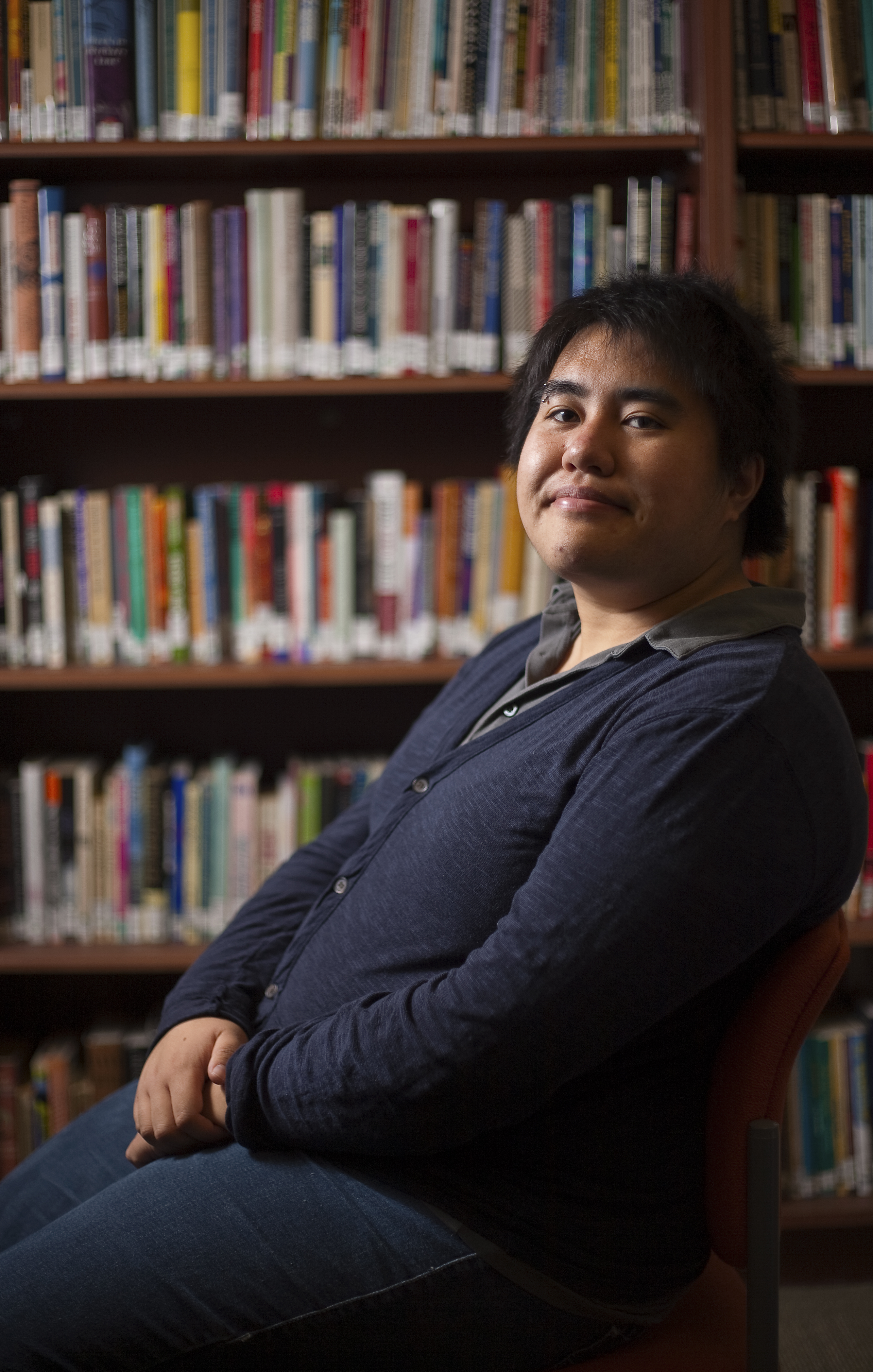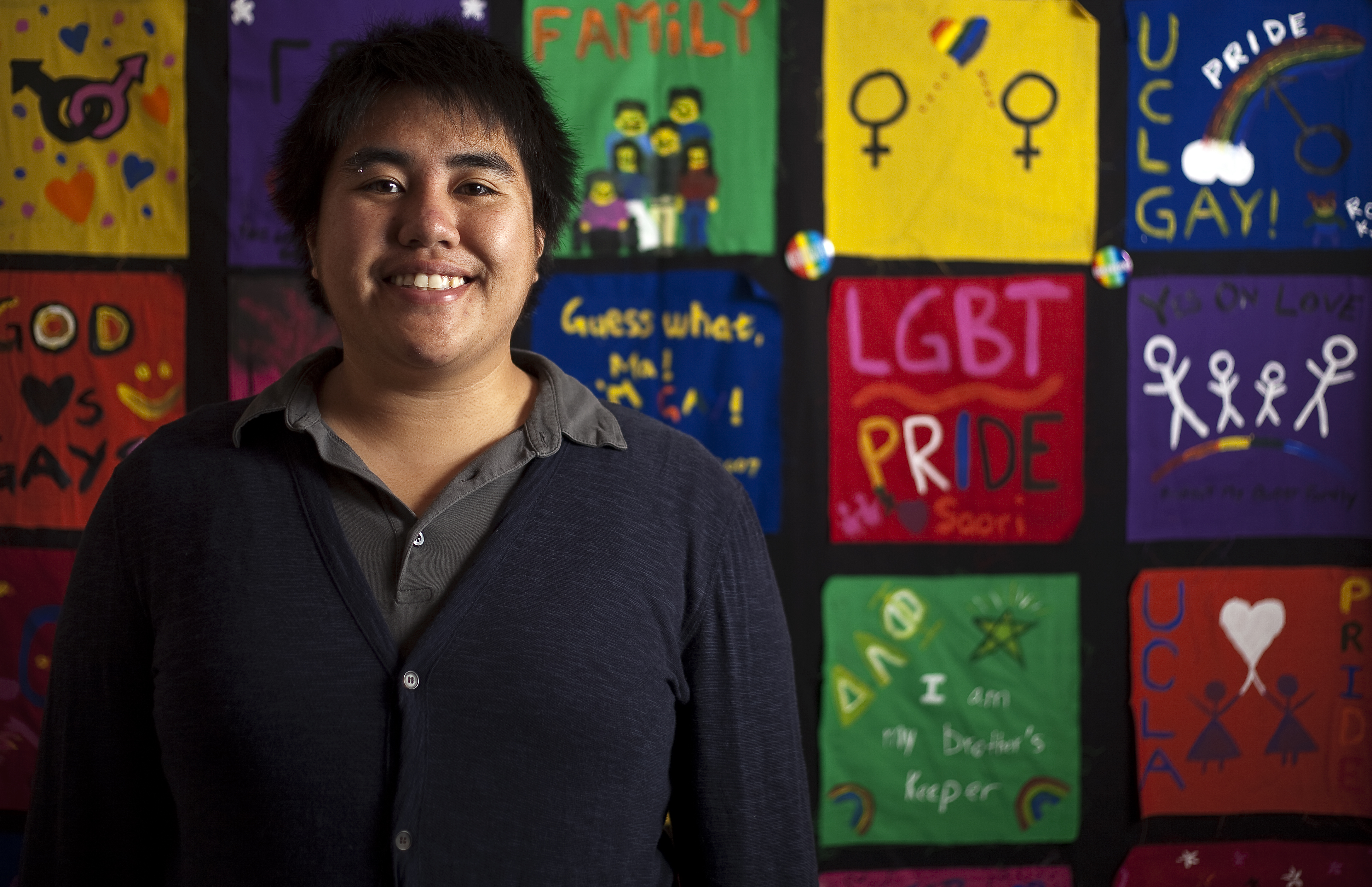
Ryth Mendez is genderqueer who works to increase acceptance of this identity.
Editor’s Note: Throughout this article, Ryth Mendez is referred to by the gender pronouns “they” or “their.” Mendez, who is genderqueer and does not identify as only male or female, prefers these pronouns to “he” or “she.” For Mendez, “they” encompasses multiple genders.
Ryth Mendez doesn’t identify as just male or just female.
Mendez prefers “they” instead of gender pronouns, and goes by “Ryth” instead of “Ruth,” their birth name, to discourage people from gendering them right away.
Mendez is genderqueer, which the fifth-year Asian American studies student defines for themself as embodying all genders.
Mendez identifies as part of the transgender community, though Mendez doesn’t feel that they were assigned the wrong gender at birth, or want to use surgery and hormones to pass as a certain gender.
“I can’t completely be defined as male or female,” Mendez said. “I feel like it’s not enough for me.”
Mendez’s openness about their identity has exposed them to hurtful experiences, though, both on campus and off. Last month, while Mendez was eating in a restaurant on Sawtelle Boulevard, a group of people at a nearby table snickered and commented on Mendez’s leg hair, Mendez said.
Mendez wanted to respond but was afraid of a negative reaction, they said. Mendez has heard stories from friends and seen media reports about transphobic crimes, though Mendez has never been physically attacked.
Mendez’s gender assigned at birth was female and their voice is more identifiable as female because of the higher pitch, but Mendez does not identify solely with either gender and doesn’t feel the need to shave their legs, they said.
“I try my best to ignore it,” Mendez said. “If I could I would stick up for myself, but I’m afraid of the violent aspect. Even if that person is alone, I fear the reaction.”
On campus, Mendez has faced insensitive comments from passersby and overheard people calling them a “tranny” even in the Lesbian, Gay, Bisexual, Transgender Resource Center, Mendez said.
But Mendez didn’t report these instances to university police, the LGBT Center or the Office of the Dean of Students because they didn’t want to be misunderstood or face retaliation, Mendez said.
This is a common reaction from members of the LGBT community who face harassment, said Queer Alliance director Marcus McRae, a fourth-year linguistics and anthropology and political science student.
There are usually between one and three LGBT-related incidents reported to UCPD annually, said UCPD spokeswoman Nancy Greenstein. She said she could not remember any that involved transgender individuals.
Within the Office of the Dean of Students, there has been one bias report filed and one student conduct case filed related to sexual orientation in 2011, according to an email from Dean of Students Robert Naples. They were not transgender-related, Naples said.
Verbal bashing is traditionally underreported and can be as damaging as physical violence, said Peter Carley, the counselor in residence for the LGBT center. People become used to the taunts growing up and are almost desensitized, Carley said.
As a counselor he can encourage students to report incidents, but many feel the same fears as Mendez and don’t. The jabs, however, continue to take a toll on people, Carley said.
“Everybody’s looking for a box to fit everything into, but each person is their own box,” Carley said.
Transgender students are even more vulnerable at times than other members of the LGBT community, Carley said.
For example, it’s difficult to decide which gender bathroom to use, since they could be unwelcome in both, he said.
Mendez prefers private or gender-neutral bathrooms, but they can be difficult to find on campus. Mendez said they fear a hate crime happening in a bathroom because of lack of surveillance.
Mendez uses women’s bathrooms if forced to choose, because Mendez fears retaliation from men more than from women, they said.
Sometimes in public bathrooms on campus, other students will open the door, see Mendez and leave, either unsure if they are in the right restroom or uncomfortable with Mendez’s presence, Mendez said.
If someone is staring and seems unsure about whether Mendez belongs there, Mendez will let out a slight cough so the person will hear the tone of their voice and gender Mendez as female.
“People gender me as soon as they hear me,” Mendez said.
The presence of a gender binary in society affects Mendez in other daily activities, too. On Facebook, Mendez left the “male or female” spot blank. Health care providers and teachers assume Mendez is female.
Mendez shops for clothes in both the men’s and the women’s sections but wishes there were a clothing line encompassing all genders.
Mendez came out as genderqueer last year ““ before that Mendez identified as a lesbian woman. Mendez said most of their friends were accepting and supportive but that it was much easier to come out as lesbian than it was to come out as genderqueer.
Mendez has faced resistance from other transgender people who have transitioned from male to female and believe it isn’t possible to encompass both genders.
Mendez has defended themself in on-campus arguments and online attacks on their blog, sometimes leading to bouts of depression that Mendez has battled with a counselor from Counseling and Psychological Services.
People have grown up with a gender binary, so they are not used to thinking about calling someone “he” or “she,” Mendez said. Through outreach, panels and regional conferences, Mendez is able to explain the concept of being genderqueer to more people, but explaining that the preferred gender pronoun is “they” can be awkward to bring up in a casual conversation, Mendez said.
“People still want to call me “˜she,'” Mendez said. “It’s like I’m coming out all the time.”
If people are unsure how Mendez identifies themself, Mendez prefers that they just ask. It would require a shift in the way people think to always ask someone their preferred gender upon first meeting them, but Mendez thinks it’s possible to achieve and might make others who are questioning or transitioning feel more comfortable coming out.
The LGBT center is also involved in increasing acceptance of transgender people on campus, said Raja Bhattar, the center’s director.
They honor members of the transgender community who have experienced violence or death through hate crimes annually through the Transgender Day of Remembrance.
The center also holds events and sends students to programs such as “T-camp” in January, which will bring together transgender, genderqueer and gender non-conforming students from 20 universities, Bhattar said.
Today, transgender youth who modeled for the 2012 Calender of “Angels of Change” will speak at the center about their experiences.
Small victories are encouraging to Mendez, they said. Mendez plans on taking a course next quarter on transgender issues, and when enrolling, Mendez was excited to see that more than one person had signed up.
But Mendez still has reminders of their status as a minority within a minority.
Standing in the LGBT center, Mendez scanned a patchwork of LGBT artwork on the wall, searching the squares of colorful paper covered with inspirational messages and pictures of pride from LGBT people and their families.
Among the rainbow hearts and “LGBT Pride” proclamations, Mendez couldn’t find a single transgender flag or symbol.
